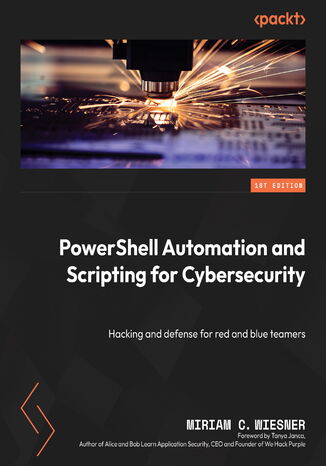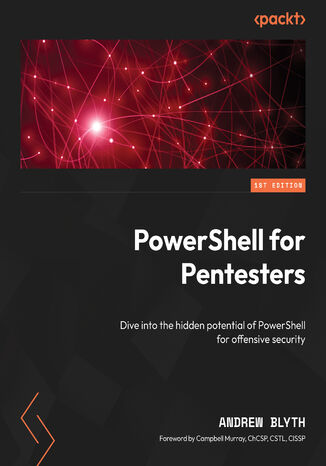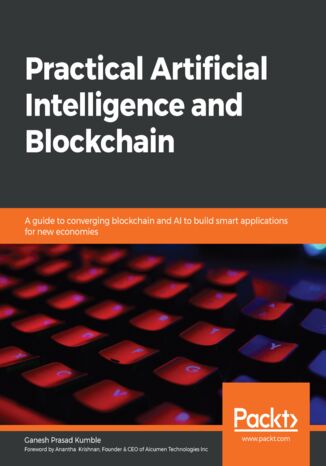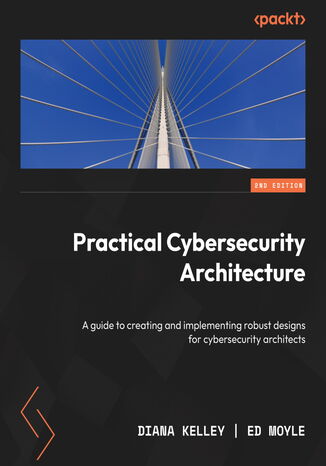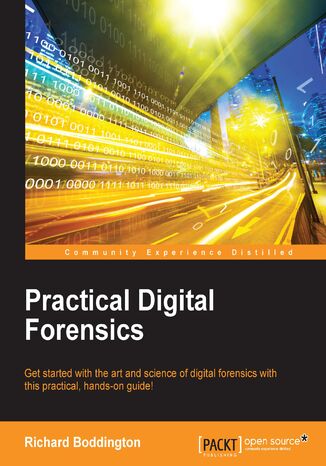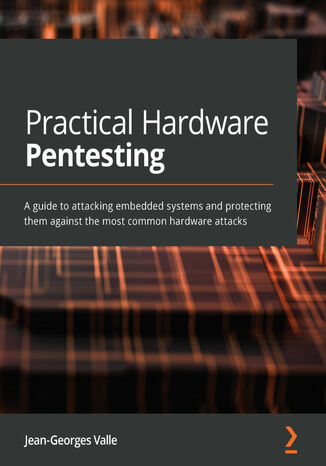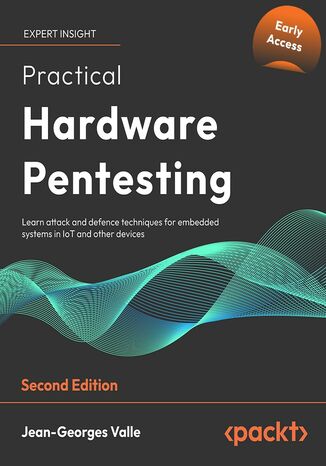Kategorie
Ebooki
-
Biznes i ekonomia
- Bitcoin
- Bizneswoman
- Coaching
- Controlling
- E-biznes
- Ekonomia
- Finanse
- Giełda i inwestycje
- Kompetencje osobiste
- Komputer w biurze
- Komunikacja i negocjacje
- Mała firma
- Marketing
- Motywacja
- Multimedialne szkolenia
- Nieruchomości
- Perswazja i NLP
- Podatki
- Polityka społeczna
- Poradniki
- Prezentacje
- Przywództwo
- Public Relation
- Raporty, analizy
- Sekret
- Social Media
- Sprzedaż
- Start-up
- Twoja kariera
- Zarządzanie
- Zarządzanie projektami
- Zasoby ludzkie (HR)
-
Dla dzieci
-
Dla młodzieży
-
Edukacja
-
Encyklopedie, słowniki
-
E-prasa
- Architektura i wnętrza
- BHP
- Biznes i Ekonomia
- Dom i ogród
- E-Biznes
- Ekonomia i finanse
- Ezoteryka
- Finanse
- Finanse osobiste
- Firma
- Fotografia
- Informatyka
- Kadry i płace
- Kobieca
- Komputery, Excel
- Księgowość
- Kultura i literatura
- Naukowe i akademickie
- Ochrona środowiska
- Opiniotwórcze
- Oświata
- Podatki
- Podróże
- Psychologia
- Religia
- Rolnictwo
- Rynek książki i prasy
- Transport i Spedycja
- Zdrowie i uroda
-
Historia
-
Informatyka
- Aplikacje biurowe
- Bazy danych
- Bioinformatyka
- Biznes IT
- CAD/CAM
- Digital Lifestyle
- DTP
- Elektronika
- Fotografia cyfrowa
- Grafika komputerowa
- Gry
- Hacking
- Hardware
- IT w ekonomii
- Pakiety naukowe
- Podręczniki szkolne
- Podstawy komputera
- Programowanie
- Programowanie mobilne
- Serwery internetowe
- Sieci komputerowe
- Start-up
- Systemy operacyjne
- Sztuczna inteligencja
- Technologia dla dzieci
- Webmasterstwo
-
Inne
-
Języki obce
-
Kultura i sztuka
-
Lektury szkolne
-
Literatura
- Antologie
- Ballada
- Biografie i autobiografie
- Dla dorosłych
- Dramat
- Dzienniki, pamiętniki, listy
- Epos, epopeja
- Esej
- Fantastyka i science-fiction
- Felietony
- Fikcja
- Humor, satyra
- Inne
- Klasyczna
- Kryminał
- Literatura faktu
- Literatura piękna
- Mity i legendy
- Nobliści
- Nowele
- Obyczajowa
- Okultyzm i magia
- Opowiadania
- Pamiętniki
- Podróże
- Poemat
- Poezja
- Polityka
- Popularnonaukowa
- Powieść
- Powieść historyczna
- Proza
- Przygodowa
- Publicystyka
- Reportaż
- Romans i literatura obyczajowa
- Sensacja
- Thriller, Horror
- Wywiady i wspomnienia
-
Nauki przyrodnicze
-
Nauki społeczne
-
Podręczniki szkolne
-
Popularnonaukowe i akademickie
- Archeologia
- Bibliotekoznawstwo
- Filmoznawstwo
- Filologia
- Filologia polska
- Filozofia
- Finanse i bankowość
- Geografia
- Gospodarka
- Handel. Gospodarka światowa
- Historia i archeologia
- Historia sztuki i architektury
- Kulturoznawstwo
- Lingwistyka
- Literaturoznawstwo
- Logistyka
- Matematyka
- Medycyna
- Nauki humanistyczne
- Pedagogika
- Pomoce naukowe
- Popularnonaukowa
- Pozostałe
- Psychologia
- Socjologia
- Teatrologia
- Teologia
- Teorie i nauki ekonomiczne
- Transport i spedycja
- Wychowanie fizyczne
- Zarządzanie i marketing
-
Poradniki
-
Poradniki do gier
-
Poradniki zawodowe i specjalistyczne
-
Prawo
- BHP
- Historia
- Kodeks drogowy. Prawo jazdy
- Nauki prawne
- Ochrona zdrowia
- Ogólne, kompendium wiedzy
- Podręczniki akademickie
- Pozostałe
- Prawo budowlane i lokalowe
- Prawo cywilne
- Prawo finansowe
- Prawo gospodarcze
- Prawo gospodarcze i handlowe
- Prawo karne
- Prawo karne. Przestępstwa karne. Kryminologia
- Prawo międzynarodowe
- Prawo międzynarodowe i zagraniczne
- Prawo ochrony zdrowia
- Prawo oświatowe
- Prawo podatkowe
- Prawo pracy i ubezpieczeń społecznych
- Prawo publiczne, konstytucyjne i administracyjne
- Prawo rodzinne i opiekuńcze
- Prawo rolne
- Prawo socjalne, prawo pracy
- Prawo Unii Europejskiej
- Przemysł
- Rolne i ochrona środowiska
- Słowniki i encyklopedie
- Zamówienia publiczne
- Zarządzanie
-
Przewodniki i podróże
- Afryka
- Albumy
- Ameryka Południowa
- Ameryka Środkowa i Północna
- Australia, Nowa Zelandia, Oceania
- Austria
- Azja
- Bałkany
- Bliski Wschód
- Bułgaria
- Chiny
- Chorwacja
- Czechy
- Dania
- Egipt
- Estonia
- Europa
- Francja
- Góry
- Grecja
- Hiszpania
- Holandia
- Islandia
- Litwa
- Łotwa
- Mapy, Plany miast, Atlasy
- Miniprzewodniki
- Niemcy
- Norwegia
- Podróże aktywne
- Polska
- Portugalia
- Pozostałe
- Przewodniki po hotelach i restauracjach
- Rosja
- Rumunia
- Słowacja
- Słowenia
- Szwajcaria
- Szwecja
- Świat
- Turcja
- Ukraina
- Węgry
- Wielka Brytania
- Włochy
-
Psychologia
- Filozofie życiowe
- Kompetencje psychospołeczne
- Komunikacja międzyludzka
- Mindfulness
- Ogólne
- Perswazja i NLP
- Psychologia akademicka
- Psychologia duszy i umysłu
- Psychologia pracy
- Relacje i związki
- Rodzicielstwo i psychologia dziecka
- Rozwiązywanie problemów
- Rozwój intelektualny
- Sekret
- Seksualność
- Uwodzenie
- Wygląd i wizerunek
- Życiowe filozofie
-
Religia
-
Sport, fitness, diety
-
Technika i mechanika
Audiobooki
-
Biznes i ekonomia
- Bitcoin
- Bizneswoman
- Coaching
- Controlling
- E-biznes
- Ekonomia
- Finanse
- Giełda i inwestycje
- Kompetencje osobiste
- Komunikacja i negocjacje
- Mała firma
- Marketing
- Motywacja
- Nieruchomości
- Perswazja i NLP
- Podatki
- Polityka społeczna
- Poradniki
- Prezentacje
- Przywództwo
- Public Relation
- Sekret
- Social Media
- Sprzedaż
- Start-up
- Twoja kariera
- Zarządzanie
- Zarządzanie projektami
- Zasoby ludzkie (HR)
-
Dla dzieci
-
Dla młodzieży
-
Edukacja
-
Encyklopedie, słowniki
-
E-prasa
-
Historia
-
Informatyka
-
Inne
-
Języki obce
-
Kultura i sztuka
-
Lektury szkolne
-
Literatura
- Antologie
- Ballada
- Biografie i autobiografie
- Dla dorosłych
- Dramat
- Dzienniki, pamiętniki, listy
- Epos, epopeja
- Esej
- Fantastyka i science-fiction
- Felietony
- Fikcja
- Humor, satyra
- Inne
- Klasyczna
- Kryminał
- Literatura faktu
- Literatura piękna
- Mity i legendy
- Nobliści
- Nowele
- Obyczajowa
- Okultyzm i magia
- Opowiadania
- Pamiętniki
- Podróże
- Poezja
- Polityka
- Popularnonaukowa
- Powieść
- Powieść historyczna
- Proza
- Przygodowa
- Publicystyka
- Reportaż
- Romans i literatura obyczajowa
- Sensacja
- Thriller, Horror
- Wywiady i wspomnienia
-
Nauki przyrodnicze
-
Nauki społeczne
-
Popularnonaukowe i akademickie
-
Poradniki
-
Poradniki zawodowe i specjalistyczne
-
Prawo
-
Przewodniki i podróże
-
Psychologia
- Filozofie życiowe
- Komunikacja międzyludzka
- Mindfulness
- Ogólne
- Perswazja i NLP
- Psychologia akademicka
- Psychologia duszy i umysłu
- Psychologia pracy
- Relacje i związki
- Rodzicielstwo i psychologia dziecka
- Rozwiązywanie problemów
- Rozwój intelektualny
- Sekret
- Seksualność
- Uwodzenie
- Wygląd i wizerunek
- Życiowe filozofie
-
Religia
-
Sport, fitness, diety
-
Technika i mechanika
Kursy video
-
Bazy danych
-
Big Data
-
Biznes, ekonomia i marketing
-
Cyberbezpieczeństwo
-
Data Science
-
DevOps
-
Dla dzieci
-
Elektronika
-
Grafika/Wideo/CAX
-
Gry
-
Microsoft Office
-
Narzędzia programistyczne
-
Programowanie
-
Rozwój osobisty
-
Sieci komputerowe
-
Systemy operacyjne
-
Testowanie oprogramowania
-
Urządzenia mobilne
-
UX/UI
-
Web development
-
Zarządzanie
Podcasty
- Ebooki
- Informatyka
- Hacking
Hacking
Czy chciałbyś głębiej wniknąć w świat cyberbezpieczeństwa oraz nowoczesnych technologii? Na pewno zainteresuje Cię w takim razie nasza biblioteka online. Znajdziesz tutaj książki, dzięki którym poznasz metody wykorzystywane przez hakerów. Dowiesz się także, jak skutecznie chronić dane oraz testować programy i wykrywać w nich błędy.
G T Gangemi, Rick Lehtinen, Deborah Russell
Zadbaj o bezpieczeństwo swojego komputera Poznaj zagrożenia, na jakie narażony jest komputer Naucz się kontrolować dostęp do komputera Stosuj techniki zapewniające bezpieczeństwo w sieci Czy mój komputer na pewno jest bezpieczny? Wiele osób zadaje sobie to pytanie dopiero w momencie, kiedy system zaczyna zachowywać się w podejrzany sposób. Okazuje się wówczas, że skaner wykrywa dziesiątki, a nawet setki wirusów, programy zaczynają działać nieprawidłowo, a z dysku giną ważne dane. Pół biedy, jeśli jest to tylko domowy komputer z prywatnymi plikami. Dużo gorsze skutki może mieć włamanie do firmowej bazy danych lub przechwycenie poufnej komunikacji. Książka "Podstawy ochrony komputerów" to wszechstronne wprowadzenie do najważniejszych zagadnień dotyczących bezpieczeństwa danych i sprzętu. Czytając ją, poznasz zagrożenia, jakie czyhają na użytkowników komputerów, ale także skuteczne techniki ochrony. Nauczysz się kontrolować dostęp do danych, prowadzić efektywną politykę zabezpieczeń, wykrywać i usuwać wirusy oraz zapobiegać przenikaniu ich do systemu. Dowiesz się, jak zapewnić bezpieczeństwo komputera w sieci oraz jak używać szyfrowania do przesyłania poufnych informacji. Przeczytasz też o najnowszych technikach zabezpieczenia bazującego na danych biometrycznych (wzorze siatkówki czy odciskach palców) oraz ochronie sieci bezprzewodowych. Niebezpieczeństwa grożące użytkownikom komputerów Kontrolowanie dostępu do komputera Walka z wirusami Prowadzenie skutecznej polityki zabezpieczeń Bezpieczne korzystanie z sieci Szyfrowanie poufnych danych Komunikacja bez ryzyka Zabezpieczenia biometryczne Tworzenie bezpiecznych sieci bezprzewodowych Stosuj skuteczne zabezpieczenia i zapewnij maksymalne bezpieczeństwo swojemu komputerowi!
PowerShell Automation and Scripting for Cybersecurity. Hacking and defense for red and blue teamers
Miriam C. Wiesner, Tanya Janca
Take your cybersecurity skills to the next level with this comprehensive PowerShell security guide! Whether you're on the red or blue team, you'll gain a deep understanding of PowerShell's security capabilities and how to apply them.With years of hands-on experience, the author brings real-world use cases to demonstrate PowerShell’s critical role in offensive and defensive security.After covering PowerShell basics and scripting fundamentals, you'll explore PowerShell Remoting and remote management technologies. You'll learn to configure and analyze Windows event logs, identifying crucial logs and IDs for effective monitoring. The book delves into PowerShell's interaction with system components, Active Directory, and Azure AD, including stealth execution methods. You’ll uncover authentication protocols, enumeration, credential theft, and exploitation, providing strategies to mitigate these risks. A dedicated red and blue team cookbook offers practical security tasks. Finally, you'll delve into mitigations such as Just Enough Administration, AMSI, application control, and code signing, emphasizing configuration, risks, exploitation, bypasses, and best practices.By the end of this book, you’ll confidently apply PowerShell for cybersecurity, from detection to defense, staying ahead of cyber threats.
Dr. Andrew Blyth, Campbell Murray
PowerShell for Penetration Testing is a comprehensive guide designed to equip you with the essential skills you need for conducting effective penetration tests using PowerShell.You'll start by laying a solid foundation by familiarizing yourself with the core concepts of penetration testing and PowerShell scripting. In this part, you'll get up to speed with the fundamental scripting principles and their applications across various platforms. You’ll then explore network enumeration, port scanning, exploitation of web services, databases, and more using PowerShell tools. Hands-on exercises throughout the book will solidify your understanding of concepts and techniques. Extending the scope to cloud computing environments, particularly MS Azure and AWS, this book will guide you through conducting penetration tests in cloud settings, covering governance, reconnaissance, and networking intricacies. In the final part, post-exploitation techniques, including command-and-control structures and privilege escalation using PowerShell, will be explored. This section encompasses post-exploitation activities on both Microsoft Windows and Linux systems.By the end of this book, you’ll have covered concise explanations, real-world examples, and exercises that will help you seamlessly perform penetration testing techniques using PowerShell.
Ganesh Prasad Kumble, Anantha Krishnan
AI and blockchain are two emerging technologies catalyzing the pace of enterprise innovation. With this book, you’ll understand both technologies and converge them to solve real-world challenges.This AI blockchain book is divided into three sections. The first section covers the fundamentals of blockchain, AI, and affiliated technologies, where you’ll learn to differentiate between the various implementations of blockchains and AI with the help of examples. The second section takes you through domain-specific applications of AI and blockchain. You’ll understand the basics of decentralized databases and file systems and connect the dots between AI and blockchain before exploring products and solutions that use them together. You’ll then discover applications of AI techniques in crypto trading. In the third section, you’ll be introduced to the DIApp design pattern and compare it with the DApp design pattern. The book also highlights unique aspects of SDLC (software development lifecycle) when building a DIApp, shows you how to implement a sample contact tracing application, and delves into the future of AI with blockchain.By the end of this book, you’ll have developed the skills you need to converge AI and blockchain technologies to build smart solutions using the DIApp design pattern.
Cybersecurity architecture is the discipline of systematically ensuring that an organization is resilient against cybersecurity threats. Cybersecurity architects work in tandem with stakeholders to create a vision for security in the organization and create designs that are implementable, goal-based, and aligned with the organization’s governance strategy.Within this book, you'll learn the fundamentals of cybersecurity architecture as a practical discipline. These fundamentals are evergreen approaches that, once mastered, can be applied and adapted to new and emerging technologies like artificial intelligence and machine learning. You’ll learn how to address and mitigate risks, design secure solutions in a purposeful and repeatable way, communicate with others about security designs, and bring designs to fruition. This new edition outlines strategies to help you work with execution teams to make your vision a reality, along with ways of keeping designs relevant over time. As you progress, you'll also learn about well-known frameworks for building robust designs and strategies that you can adopt to create your own designs.By the end of this book, you’ll have the foundational skills required to build infrastructure, cloud, AI, and application solutions for today and well into the future with robust security components for your organization.
Digital Forensics is a methodology which includes using various tools, techniques, and programming language. This book will get you started with digital forensics and then follow on to preparing investigation plan and preparing toolkit for investigation.In this book you will explore new and promising forensic processes and tools based on ‘disruptive technology’ that offer experienced and budding practitioners the means to regain control of their caseloads. During the course of the book, you will get to know about the technical side of digital forensics and various tools that are needed to perform digital forensics. This book will begin with giving a quick insight into the nature of digital evidence, where it is located and how it can be recovered and forensically examined to assist investigators. This book will take you through a series of chapters that look at the nature and circumstances of digital forensic examinations and explains the processes of evidence recovery and preservation from a range of digital devices, including mobile phones, and other media. This book has a range of case studies and simulations will allow you to apply the knowledge of the theory gained to real-life situations. By the end of this book you will have gained a sound insight into digital forensics and its key components.
If you’re looking for hands-on introduction to pentesting that delivers, then Practical Hardware Pentesting is for you. This book will help you plan attacks, hack your embedded devices, and secure the hardware infrastructure.Throughout the book, you will see how a specific device works, explore the functional and security aspects, and learn how a system senses and communicates with the outside world. You’ll set up a lab from scratch and then gradually work towards an advanced hardware lab—but you’ll still be able to follow along with a basic setup. As you progress, you’ll get to grips with the global architecture of an embedded system and sniff on-board traffic, learn how to identify and formalize threats to the embedded system, and understand its relationship with its ecosystem. You’ll discover how to analyze your hardware and locate its possible system vulnerabilities before going on to explore firmware dumping, analysis, and exploitation. The reverse engineering chapter will get you thinking from an attacker point of view; you’ll understand how devices are attacked, how they are compromised, and how you can harden a device against the most common hardware attack vectors. By the end of this book, you will be well-versed with security best practices and understand how they can be implemented to secure your hardware.
Practical Hardware Pentesting, Second Edition, is an example-driven guide that will help you plan attacks, hack your embedded devices, and secure the hardware infrastructure.Throughout the book, you’ll explore the functional and security aspects of a device and learn how a system senses and communicates with the outside world. You’ll set up a lab from scratch and gradually work towards an advanced hardware lab.The first part of this book will get you attacking the software of an embedded device. This will get you thinking from an attacker point of view; you’ll understand how devices are attacked, compromised, and how you can harden a device against the most common hardware attack vectors. As you progress, you’ll get to grips with the global architecture of an embedded system and sniff on-board traffic, learn how to identify and formalize threats to the embedded system, and understand its relationship with its ecosystem. This 2nd Edition covers real-world examples featuring various devices like smart TVs, baby monitors, or pacemakers, you’ll discover how to analyze hardware and locate its possible vulnerabilities before going on to explore firmware dumping, analysis, and exploitation.By the end of this book, you’ll and understand how to implement best practices to secure your hardware.


